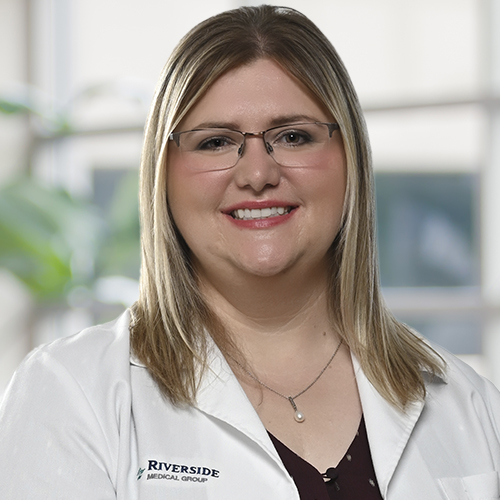A cancer diagnosis brings with it a great deal of uncertainty and fear—and rightfully so. It’s a shock to one’s system to think about what could happen as a result. However, a diagnosis doesn’t necessarily equate to a death sentence.

Dr. Cassandra Lacher, Oncologist and Hematologist at Riverside Cancer Institute, offers helpful advice surrounding what people can expect when they embark on their cancer treatment journey.
Navigating the Initial Stages
In her first visit with patients, Dr. Lacher inquires what they want to know about their diagnosis—and then she fills in the blanks from there. Typically, patients want to understand treatment options and prognosis first and foremost. Questions about treatment also include “logistical” considerations, such as if they will be able to work or perform social activities throughout their treatment process, as well as side effects.
Dr. Lacher conducts an extensive discussion about family history and social history. Having family history information prior to the appointment is helpful, because then she knows what might be needed in the scope of genetic testing.
“The other thing I try to do for patients is let them know that they are a part of the decision-making process. This isn't just me making the decision for a patient. They get to be a part of the team who makes the decisions,” she states. “I want them to really understand what each next step will be leading up to their next appointment.”
Understanding Treatment Options
Cancer treatment has changed significantly in the last 15-20 years. However, the horror stories of constant vomiting and severe radiation reactions still tend to persist. Dr. Lacher urges patients and their support systems to turn to the experts if they have questions, rather than enlist the help of “Dr. Google” or get advice from a friend or family member who went through cancer treatment.
Every patient is unique and just because one person might have had a certain experience, it doesn’t mean that is true across the board. She encourages patients and their support people to write down questions ahead of time so they don’t forget what they wanted to know when they get in the room.
That said, there are reputable sources online where patients can learn more about their particular type of cancer and appropriate treatments. A great one is the American Cancer Society website, which even has a section that outlines what to ask one’s doctor.
“I also just want people to know that with chemotherapy treatment for cancer, while it has side effects, my goal is for it to be helpful more than it is hurtful,” notes Dr. Lacher. “So, being able to know we can make adjustments, that there's an art to oncology, which is one of the things I love about it, and that we have a lot of flexibility in helping people tolerate treatment, helping people get through treatment, but still giving the benefit of treatment.”
Another element to remember is that today’s cancer treatment journey involves an entire team of experts who all work together to provide the best possible treatment protocols. For example, Dr. Lacher collaborates with radiation oncology, pulmonology, endocrinology, rheumatology, interventional radiology, general surgeons—as well as social workers, nurse navigators, and a dietician. A chaplain is available to help patients who might benefit from that type of support, and Riverside even provides access to a therapy dog.
The Role of a Support System
When someone is going through a cancer treatment journey, it’s essential to have a support system in place. Yet, there are some “do’s and don’ts” that Dr. Lacher advises. If you are the person providing the support, listening is key. “I always tell people to try to give space to talk if they want to talk, or be in a space where you can be quiet together, but try to support by just listening.”
She also urges support people to offer specific help. So, don’t just say, “I’m here. If you need something let me know.” Instead, you might offer to do their laundry, wash the dishes, mow the grass, or bring over a meal.
“It's hard when your brain is already swimming to think of a specific task to delegate. But, for someone to say, ‘I can help with this specific thing,’ it's a lot easier to say, ‘Yes, that is something I need help with.’”
Another tip is to try to limit how many people the patient brings with them to their appointments. If there are five or six people in the room, they might get all of their questions answered—but those might not be the patient’s questions. One or two trusted individuals can absorb the information and articulate it later, particularly if the patient is overwhelmed.
“I always want to make sure patients get their questions answered. I think when we leave with unanswered questions, it can cause a lot of anxiety and discontent with treatment or a lot of concerns or fear about treatment. Being able to build a relationship with the provider so you can ask whatever question, whether you think it's a silly question or not. They're all questions worth discussing,” assures Dr. Lacher. “I want patients to always feel comfortable with that.”
Click here for more information about cancer care at Riverside.
